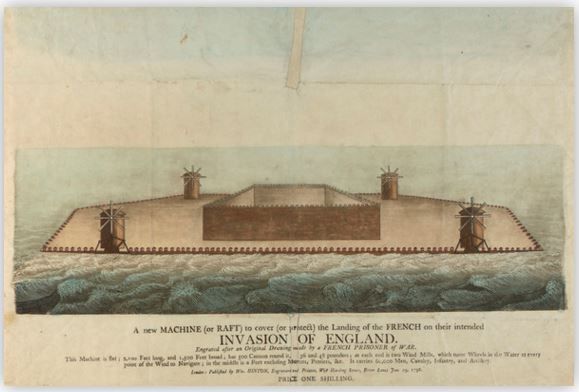
By 1798, the project had become all but impossible due to the supremacy of the Royal Navy. But that did not stop French generals and admirals from dreaming up ways of bypassing the Royal Navy, including digging a tunnel beneath the Channel and moving troops with balloons.
This image in the National Maritime Museum in London shows one proposed method that existed only in the terrified imaginations of Britons. It’s a huge fort on a raft that would carry 60,000 soldiers:
Unlike other prints produced during this wave of paranoia in London, which represent the vessel as an excessively fantastic contraption more appropriate to the tales of Baron Münchhausen, this print pares it down to a severe geometric symmetry to assert its claim to being based in fact. Indeed, a greater air of authority is lent by the claim that the engraving is made after an original drawing by a French prisoner of war, and by the wealth of statistical detail in the caption. The machine is described as: 'Flat; 2,100 Feet long, and 1,500 Feet broad; has 500 Cannon round it, 36 and 48 Pounders; at each end is two Wind Mills, which turns Wheels in the Water at every point of the Wind to Navigate; in the middle is a Fort enclosing Mortars, Perriers, &c. It carries 60,000 Men, Cavalry, Infantry, and Artillery.' Nonetheless, this does not disguise the unseaworthiness of the 'new machine', and neither is there any firm evidence that such a vessel was being constructed on the north French coast at this time.

No comments:
Post a Comment